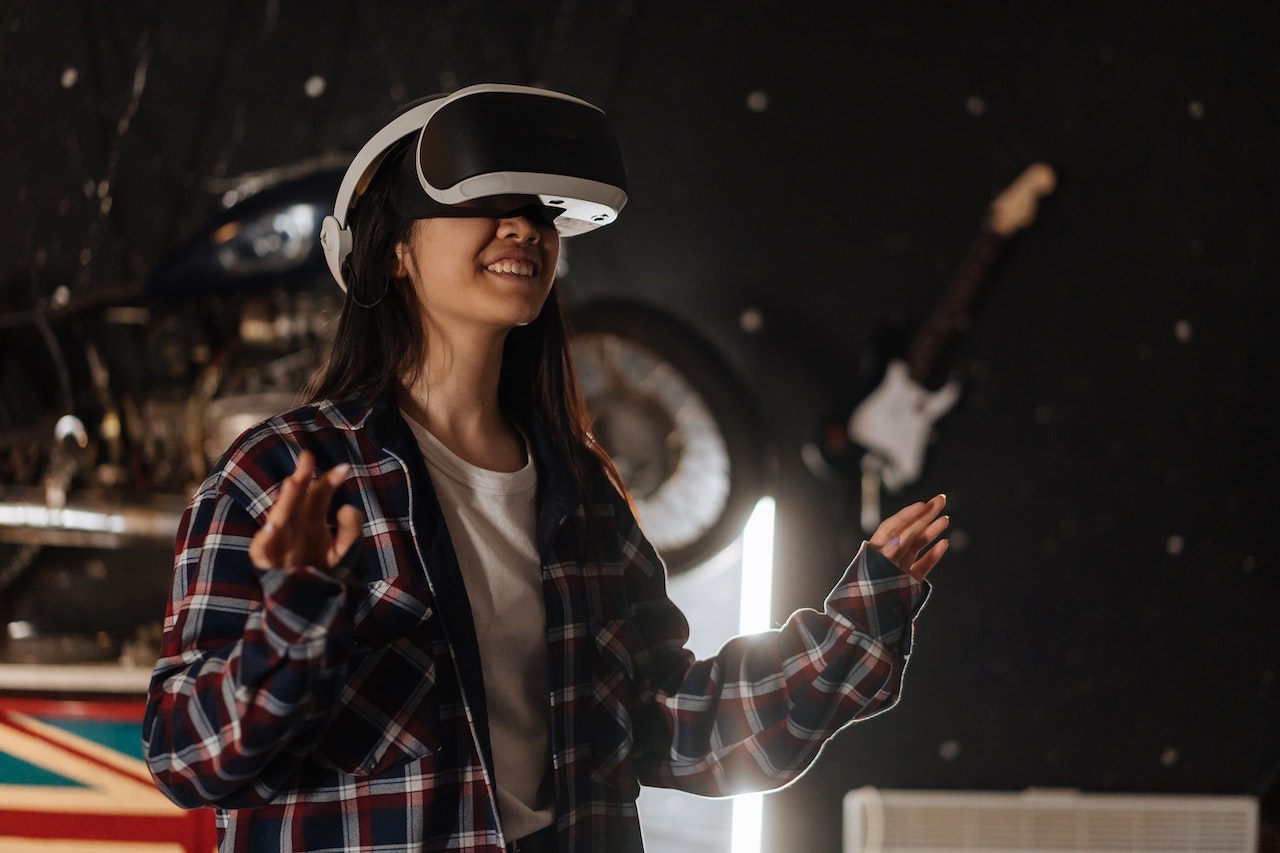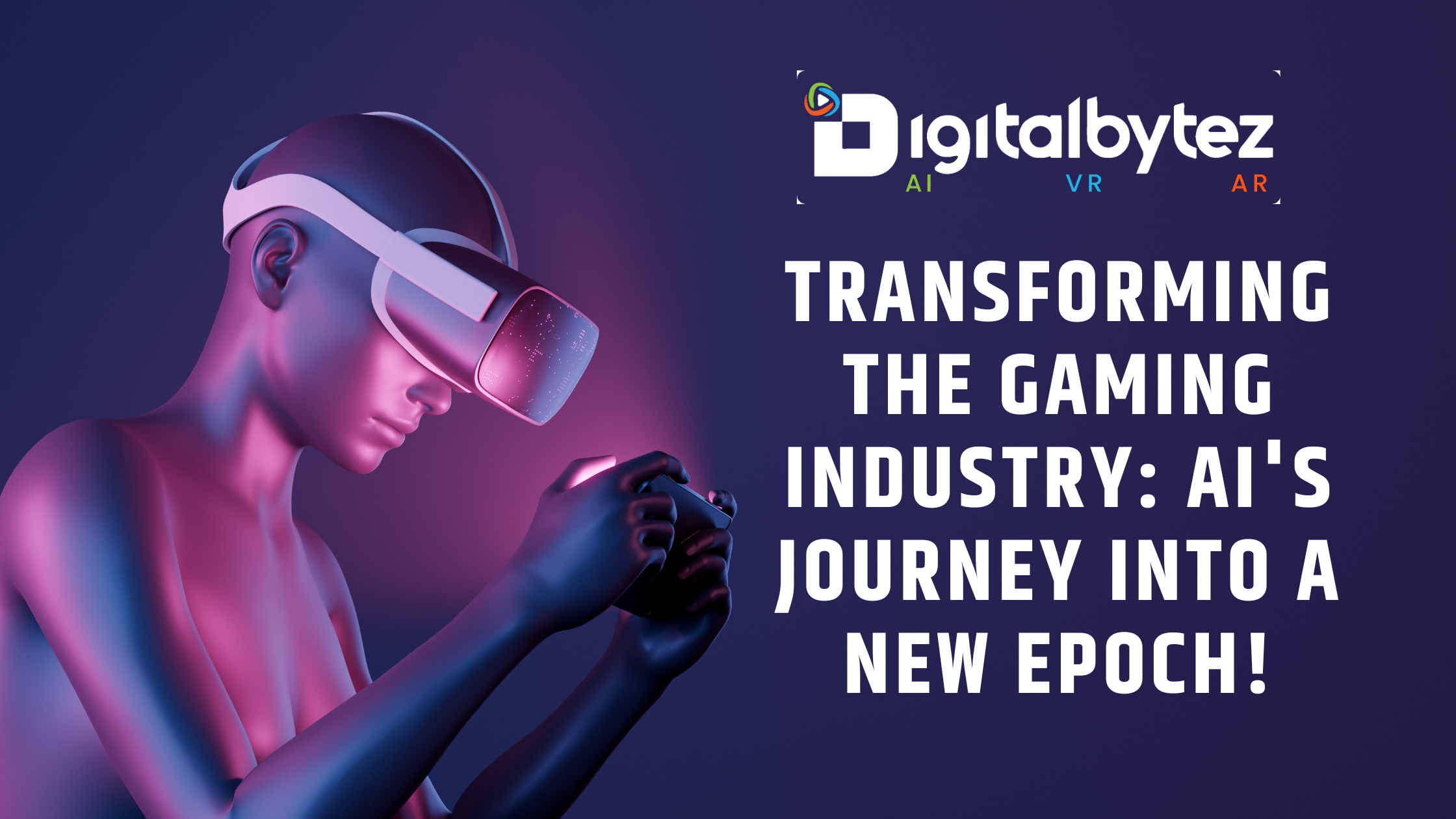
TOP 10 VIRTUAL REALITY TRENDS AND PREDICTIONS FOR 2024
Over the past decade, Virtual reality has come a long way and it has proved to be more than just games and entertainment. According to Deloitte, the VR market is expected to grow by 50% in 2024 compared with the previous year, generating almost $7 billion in global revenues. Currently VR is being used across various sectors such as education, healthcare, entertainment, business, tourism, etc.
In this article we will discuss the how this technology is emerging with latest trends and paving a way for itself through various sectors and establishing its hold in industries other than gaming.
1. VR in Remote Education
VR is being used in education sector to provide students with a wholesome learning experience by providing an interactive and engaging environment for the students. During the COVID pandemic the face-to-face education system was disrupted, thus VR provides a solution for future. According to research, an 20% increase has been observed in the test scores. VR has been used for various subjects such as history, geography where Google Expeditions is useful to provide virtual tours; other subject such as life sciences can make extensive use of VR to study and visualise various processes and experiments.
2. VR in Retail Sector
VR has been used in retail to provide training to employees as it helps staff to experience the workspace in a virtual environment and learning the basics without disrupting the everyday business. Walmart applied this technology to train their employees for the Black Friday sale. Apart from employee training VR can be used to provide customers with a virtual experience while shopping online.
3. Gaming in VR
Gaming sector owns the majority of the VR software market and is one of the highly invested fields. VR gaming revenue is currently valued at $1.1 billion and is expected to grow to $2.4 billion by 2024 (PwC, 2020). New and improved games and gaming trends keep emerging with the increase in demand of VR enabled games. The gaming market has become more competitive over the years with VR being introduced and various companies keep on improving their VR softwares to maintain their sales and a strong customer base. Thus, the gaming industry can be expected to grow further in the future.
4. VR in Tourism
VR provide travel companies, hotels etc with a lifelike experience to their customers giving them insights about the facilities they offer. In recent data published by GlobalWebIndex, 40% of Gen Z’s want to see more travel applications through VR technology (Global Web Index, 2019).
VR also provide people with virtual tours and people can experience various places and tourist hotspots from the comfort of their homes.
5. Cheaper VR Models
The cost of VR makes it unaffordable for majority of the population. Today some companies such as Oculus are offering products such as OculusGo at a lower price thus piquing the interest of customers. Other models, like Google’s Daydream, are offering a smartphone-based VR experience for just $50. If you want to go even lower, Google Cardboard is by far the cheapest there is, offering a considerable VR experience for only $20.
6. Improved VR Technologies
VR’s early days revolved around 360-pixel videos, resulting in a limited impact on users. These days, however, 5k and 8k stereoscopic videos are empowering VR technology with much-improved quality. VR companies are also exploring the eye tracking capabilities of VR headsets.
7. VR in Sports and Events
Big sporting companies are investing in VR to provide spectators with an enhanced virtual experience than the usual visual based campaigns. Post pandemic the companies have been working to organise various virtual events so that the audience feels more engaged.
8. Increase in VR Apps
Companies are developing tools to incorporate VR technology into mobile apps. This would make VR more assessable and cheaper for the user and may interest the non-VR users.
9. VR in Healthcare
VR therapy is expected to grow in 2023 as the technology improves and becomes more affordable. VR therapy can treat various mental health conditions, such as anxiety, depression, and post-traumatic stress disorder (PTSD). VR allows the patients to confront their fears in a controlled environment.
10. VR in Design and Prototyping
With the help of VR and 3D printers it would be easier to build prototypes and bring them to market making the process less time consuming. For example, German car giant BMW visualises its concepts on true-to-scale holographic 3D models of the prototype vehicles, bypassing the need to invest in physical manufacturing for R&D.
FAQ – Virtual Reality Trends 2024
What are the top virtual reality trends and predictions for 2024?
Get ready for an exciting virtual reality (VR) world in 2023! Businesses will be using VR to improve their operations, and haptic technology will be improving to make the experience even more realistic. Augmented reality (AR) and mixed reality (MR) will also be popular. Gaming experiences will be more thrilling, and eye-tracking technology will be more advanced. Standalone VR headsets will also be more widely available. There will be lots of great VR content to explore, and socially interactive experiences will become more common. VR will also be used more often in education and mental health treatments.
How is virtual reality being used in business?
Virtual reality is being used in business for a range of purposes, such as product design, employee training, and virtual meetings. For example, architects can use VR to visualize and test designs, while companies can use VR to provide immersive training experiences for employees in a safe and controlled environment.
What is haptic technology?
Haptic technology refers to technology that allows users to experience touch sensations through a device, such as a VR headset or controller. For example, haptic feedback can simulate the sensation of touching or holding an object in a virtual environment.
What is augmented reality?
Augmented reality (AR) is a technology that overlays digital information onto the real world, typically using a smartphone or other mobile device.
What is mixed reality?
Mixed reality (MR) is a technology that combines elements of both virtual reality and augmented reality to create an immersive experience that blends the virtual and real worlds.
What is VR gaming?
VR gaming refers to the use of virtual reality technology in video games. VR gaming allows players to fully immerse themselves in a virtual world, often using a VR headset and other specialized equipment.
What is eye-tracking technology?
Eye-tracking technology refers to technology that can track a user’s eye movements, often using specialized cameras or sensors. Eye-tracking technology can be used to improve the user experience in VR, as well as for other purposes such as market research or medical diagnosis.
What are standalone VR headsets?
Standalone VR headsets are VR headsets that do not require a separate computer or console to operate. Standalone VR headsets are typically more affordable and easier to use than tethered VR headsets, which require a separate device to be connected to the headset.
How is virtual reality being used in therapy and mental health treatment?
Virtual reality is being used in therapy and mental health treatment to provide immersive and interactive experiences for patients. For example, VR therapy can be used to treat phobias, PTSD, and other mental health conditions by exposing patients to virtual environments that trigger their symptoms in a safe and controlled manner.
Conclusion
The following trends prove that VR is here to stay and with emergence of new concepts and ideas it is going to establish a strong hold for itself in almost all the sectors which would be interesting to look out for. The new inventions and improvements in VR is going to make it more assessable and along with AR it is going to world new reality.









